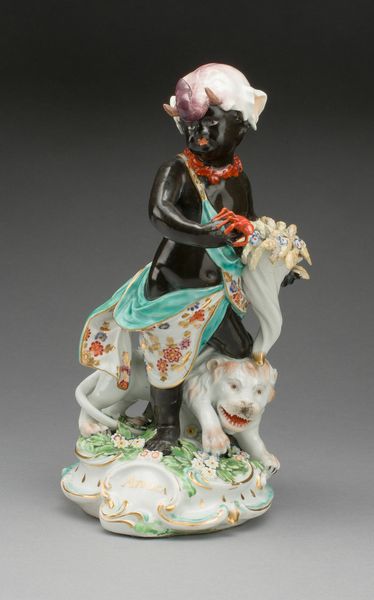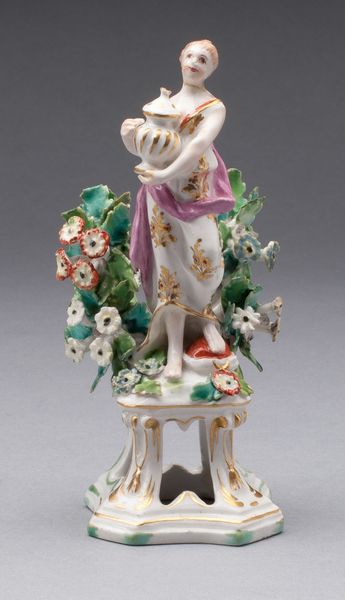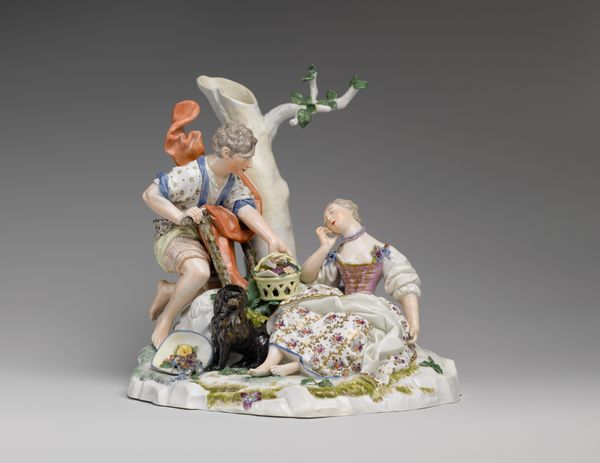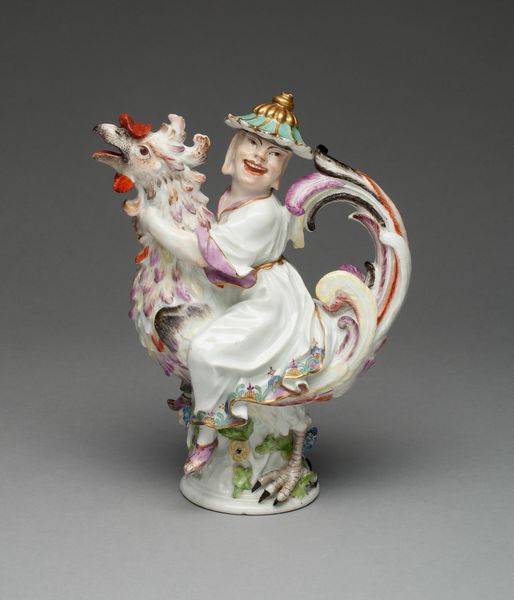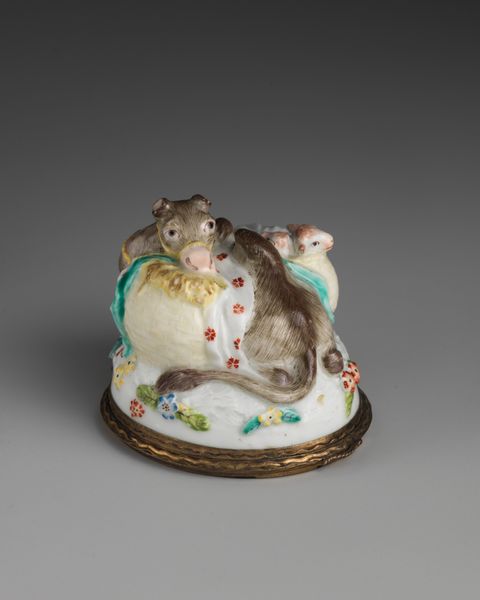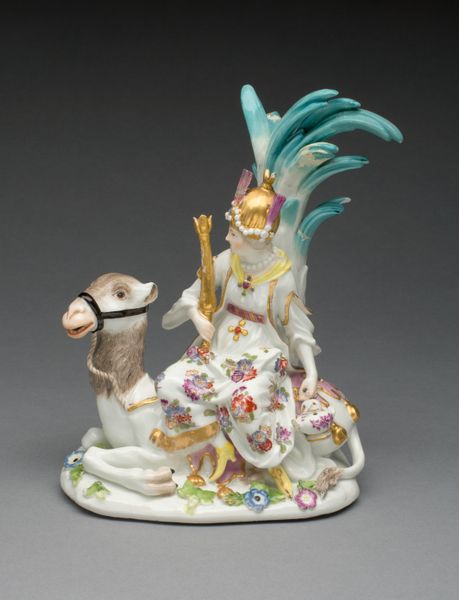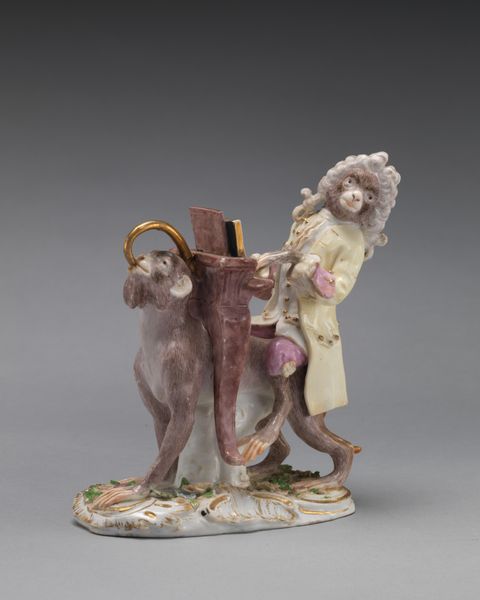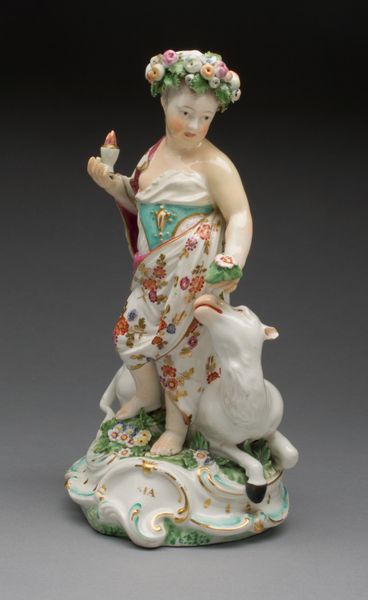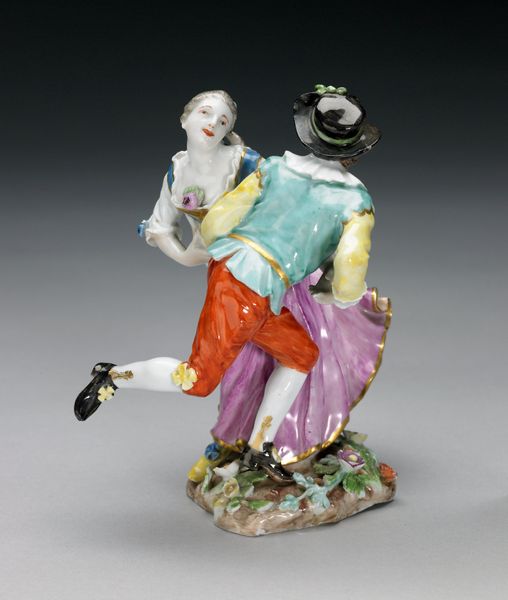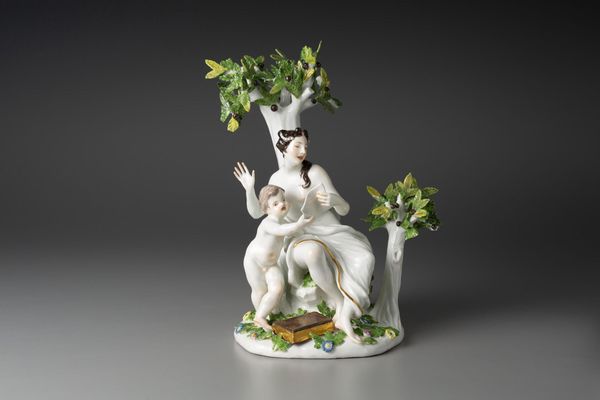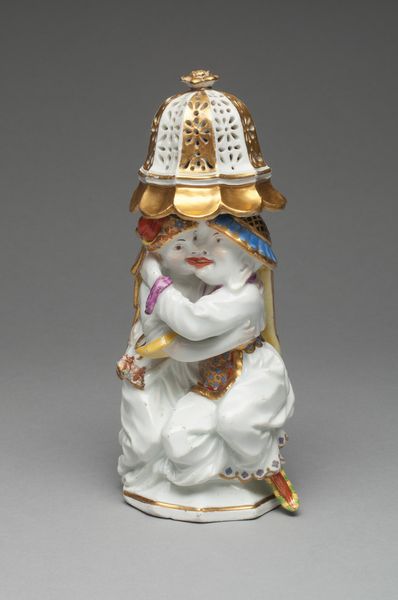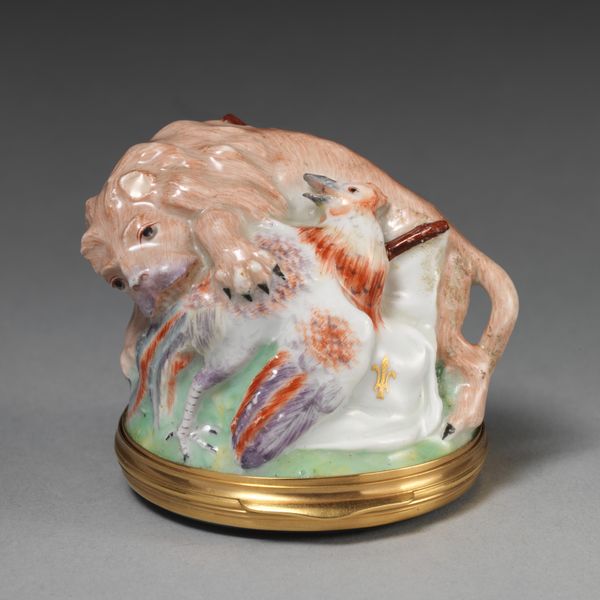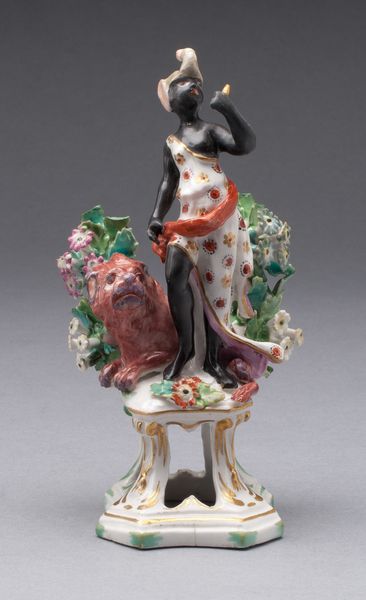
Allegorical Figure Representing Africa 1746
0:00
0:00
ceramic, porcelain, sculpture
#
allegory
#
ceramic
#
porcelain
#
figuration
#
sculpture
#
decorative-art
#
rococo
Dimensions: 15.1 × 14.5 × 9.7 cm (5 15/16 × 5 11/16 × 3 13/16 in.)
Copyright: Public Domain
Curator: Ah, look! I think you'll find this striking. Here we have “Allegorical Figure Representing Africa,” a porcelain sculpture created around 1746 by the Meissen Porcelain Manufactory. Editor: Well, hello there! That is quite the confident stance atop a rather…bemused-looking lion-creature. It's got a theatrical energy, doesn’t it? A story just waiting to unfold, like a character stepped right out of a dream or a fable. Curator: Indeed. The craftsmanship is exceptional; observe the subtle gradients in the lion's mane and the elaborate headdress the figure wears. These details articulate a complex interplay between realism and stylized representation typical of Rococo decorative arts. Editor: Rococo, yes, but with an exotic twist. The colors are playful yet somehow unsettling given the clear symbolism… the darker figure, the strange elephant headpiece… The sculpture definitely ignites some internal tension! It makes me think about representation and power dynamics, how "Africa" is being portrayed through this very European lens. Curator: Your reading brings forth critical considerations concerning the colonial gaze, precisely. This piece, viewed through a modern lens, prompts reflection on how allegory and artistic license can inadvertently perpetuate biased perspectives. We can analyze the very posture—the figure seated atop a wild animal—as a signifier of dominance and control, for instance. Editor: Right, and what about that playful juxtaposition of colors against the figure’s complexion? The artisan, intentionally or not, sparks a disquieting dialogue on exoticism and control. Curator: Precisely. And consider the materiality of the porcelain itself, highly prized in Europe, becoming a tool to render another continent, effectively possessing its image in a fragile, manufactured object. The translucence and delicacy become metaphors. Editor: What fascinates me is how this single object carries so much weight. It's more than just porcelain; it’s a concentrated dose of history, bias, and the sheer audacity of trying to capture a whole continent in one swoop. It is strangely beautiful and uncomfortable. Curator: Ultimately, isn't this the enduring value of art—its ability to make us confront and question entrenched societal perspectives? Editor: I think you are right. Walking away from this, I'm thinking about whose stories get told, and more importantly, how those stories are shaped, molded, and ultimately… consumed.
Comments
No comments
Be the first to comment and join the conversation on the ultimate creative platform.
